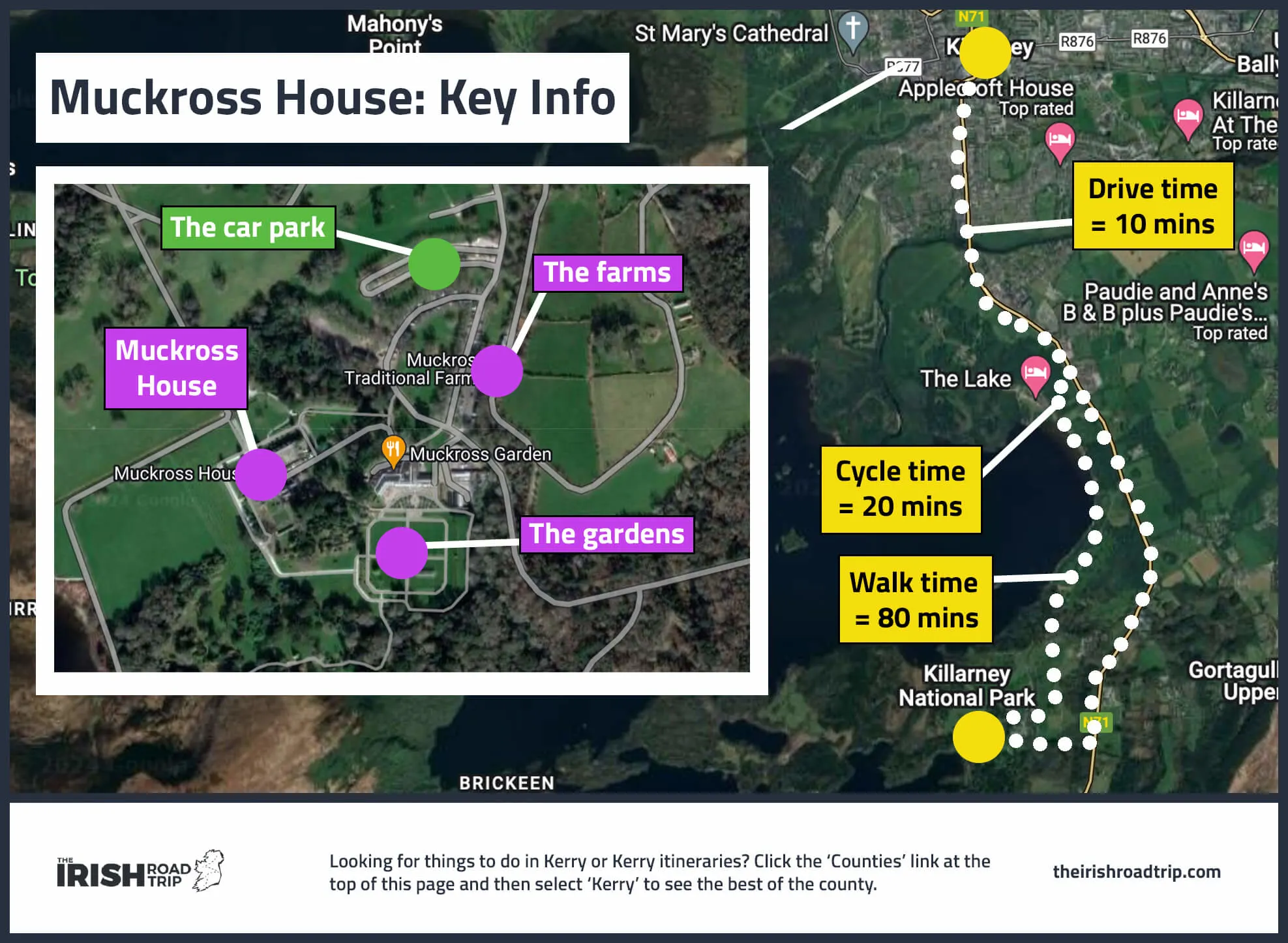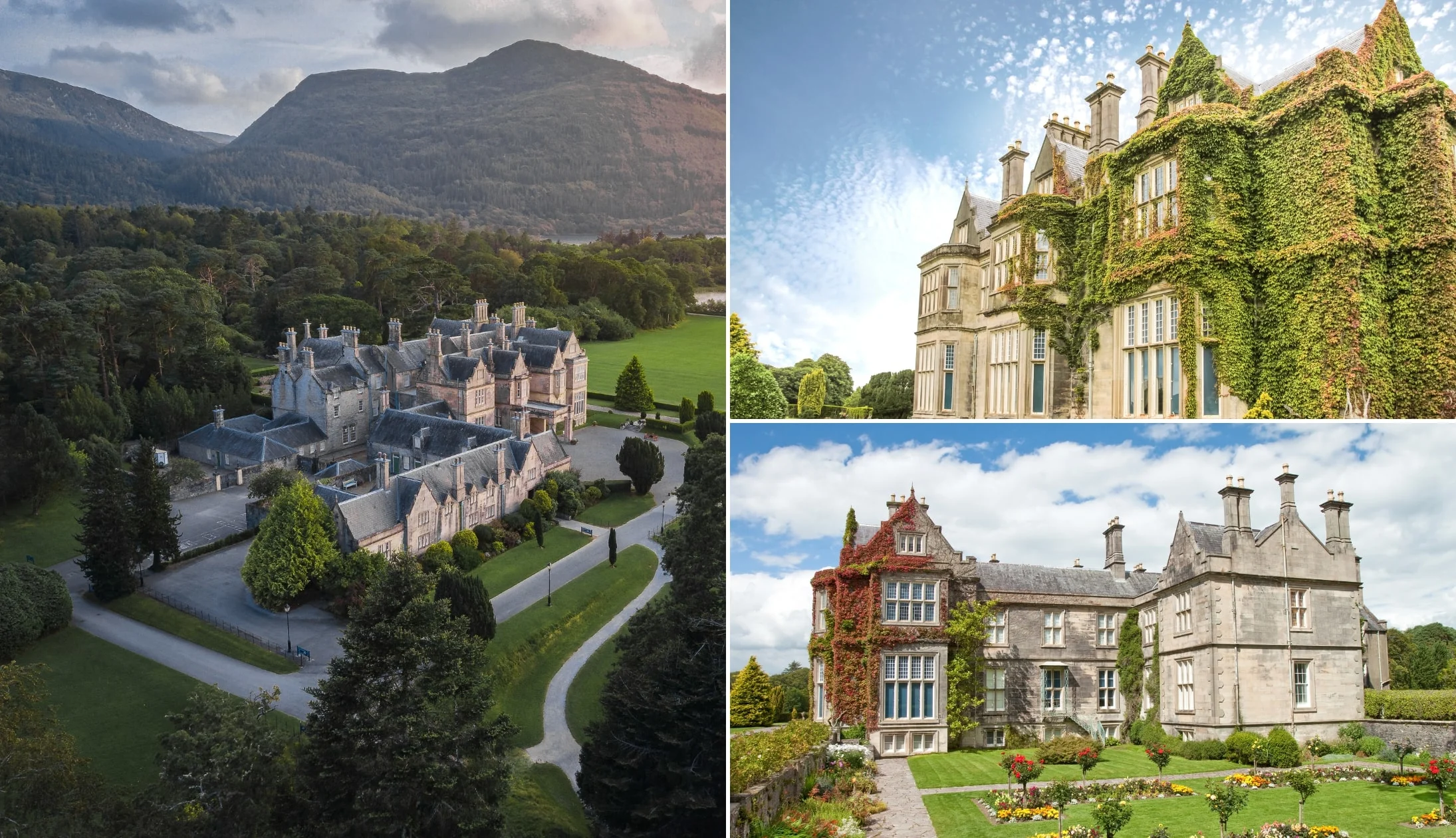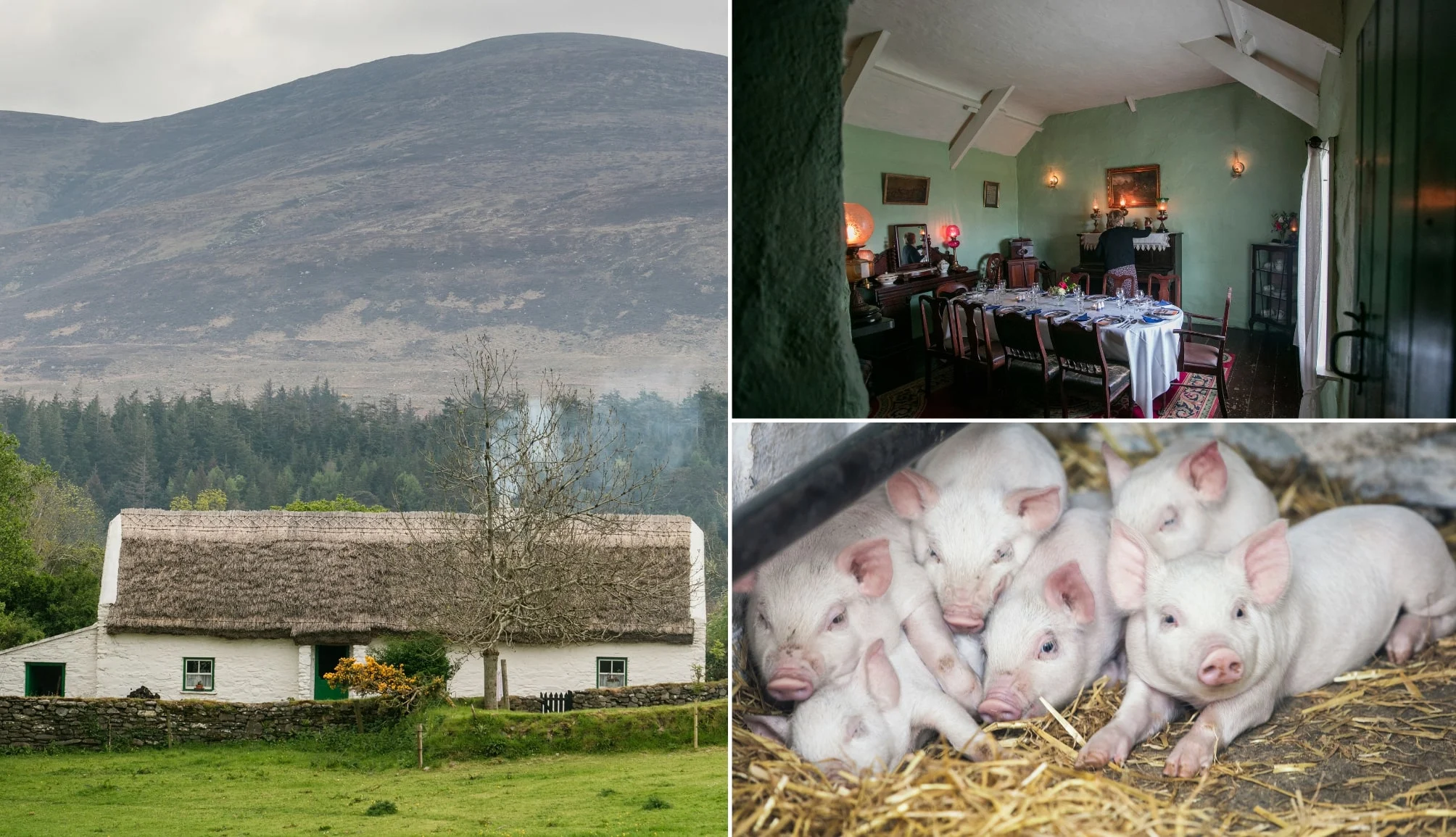Muckross House and Gardens is an enchanting 19th century Victorian mansion is nestled on the little Muckross Peninsula.
A focal point in the stunning Killarney National Park, visitors to Muckross House can explore the building, walk the gardens and see the traditional farms.
Oh, and there’s also the glorious views of the Muckross Lake and Lough Leane from its doorstep. Find everything you need-to-know below!
Visiting Muckross House and Gardens

Click to enlarge
Although a visit to Muckross House in Killarney is fairly straightforward, there are a few need-to-knows that’ll make your visit smoother.
Pay particular attention to point 3, about getting around, as this is a great option for exploring the park.
1. Location
You’ll find Muckross House and Gardens in along the Ring of Kerry in Killarney National Park, around 4km from Killarney Town (it’s a 10-minute drive, a 20-minute cycle or a 80-minute walk).
2. Parking
There’s a car park right next to Muckross House and Gardens. You’ve a short stroll then to both the House and Muckross Abbey (there’s also public toilets nearby).
3. The tours
You can either tour the house (€7 for an adult and €6 for a concession), the farms (€7 for an adult and €6 for a concession) or pay to see them both, which is €12 for an adult and €10 for a concession.
The history of Muckross House

Photos via Shutterstock
The history of the Muckross estate goes as far back as the 17th century, when wealthy Welshman, Henry Arthur Herbert, came to settle in Killarney.
Herbert build the impressive Muckross House in Killarney as a home (very fancy altogether!) for his family and it was completed in 1843.
Extensive landscaping was carried out by the family in 1861, creating the Muckross Gardens and just before Queen Victoria came for a visit.
Then money became an issue
By the late 19th century, the Herbert family were faced with a series of financial problems ending their 200 year reign and in 1899, the whole 13,000 acres of estate was sold to Lord Ardilaun, who was a member of the Guinness family.
He then sold the property to Mr William Bowers Bourn, a Californian, in 1911, who then gave the estate to his daughter Maud on her marriage.
Maud’s reign and the National Park
Maud carried out many developments to the estate until her death in 1929 and then the estate was gifted to the Irish State in 1932.
In 1964, Muckross Estate became Ireland’s first National Park, which we now know as Killarney National Park.
Other things to see and do at Muckross House and Gardens

Photos courtesy Trustees of Muckross House
A visit to Muckross House and Gardens is one of the more popular things to do in Killarney for good reason.
Visitors can explore the gardens, see the weavers at work, take a tour of the house and see the traditional farms.
1. Muckross Gardens
Muckross Gardens boast a number of different gardens including the Rock Garden, which is made from natural limestone, the extensive Water Garden and the ornate Sunken Garden.
In the arboretum visitors will find a large collection of trees that came from the Southern Hemisphere and there is also the Walled Garden Centre which opens onto the Victoria walled garden.
The Garden Centre prides itself on growing a big selection of seasonal bedding plants so you can take a little bit of the magic back home with you!
2. The traditional farm
The traditional farm at Muckross House and Gardens gives visitors the opportunity to experience the day to day life of a farmer from the 1930s and 1940s.
Visitors will step back in time and see the daily chores on a farm with no access to electricity. There are three working farms here and each has animals, poultry and machinery.
3. The weavers
Mucros Weavers have been producing high-quality woven accessories for over thirty years, with the help of expert master weaver John Cahill.
Visitors can watch on as an array of items are carefully created through intricate spinning and weaving in the craft workshop.
4. The restaurant and cafe
The restaurant at Muckross House and Gardens is set against the beautiful backdrop of the Torc and Mangerton Mountains – the perfect visual feast to accompany your feast.
However, if you’d prefer to head back to the town, there are plenty of places to eat in Killarney (and there are plenty of great pubs in Killarney, too!).
Things to do nearby

One of the beauties of Muckross House in Killarney is that it’s a short spin away from plenty to see and do, like the Killarney National Park walks, Cardiac Hill, Torc Mountain and the Black Valley
Some of the best attractions nearby, in my opinion, are:
- Muckross Abbey (20-minute walk): The stunning ruins of a Franciscan friary founded in 1448
- Ross Castle (11-minute drive): A 15th century castle finely situated on the edge of Lough Leane
- Torc Waterfall (2-minute drive): A beautiful 20 metres high and 110 metres long waterfall
- Gap of Dunloe (25-minute drive): A famous mountain pass between Purple Mountain and the MacGillycuddy Reeks
- Ladies View (16-minute drive): One of Killarney’s most impressive viewpoints
- Moll’s Gap (24-minute drive): An old, bendy road with views of the park

